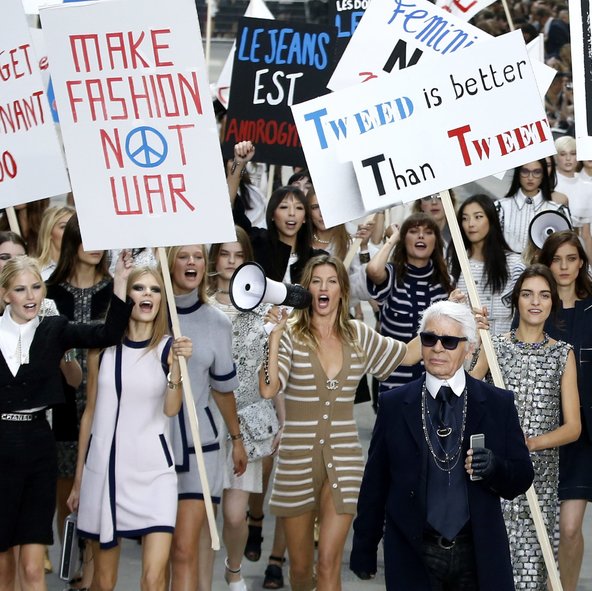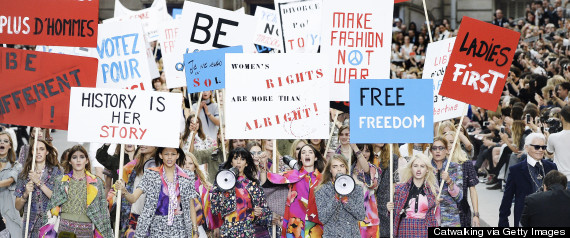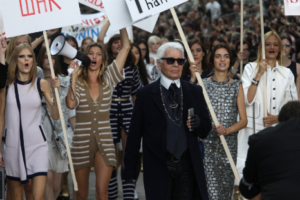“A girl should be two things: who and what she wants.” – Coco Chanel
It’s not hard to find meaning–both positive and negative–in the staged feminist protest orchestrated for the Chanel Spring 2015 runway show. The fashion-minded among us want it to be a brilliant political statement about the significance of feminism and its place in fashion and culture. But deep down we know it’s probably just a superficial marketing scheme, more concerned with capitalism than with feminism’s values and objectives.
Still, whether you’re pro or con the Chanel runway protest, the event triggered a very interesting conversation. It has peeled back the multi-layered relationship feminism has always had with fashion.
Fashion has long been a litmus test for women who call themselves feminist. Fashionable, attractive women have stereotypically, and often unfairly, been labeled anti-feminist because fashion itself is considered anti-feminist. This is understandable; it’s easy to see how fashion can objectify women and reduce their existence to the sum of their body parts. This is especially true on the runway, where models are paraded half naked and used as glorified clothes hangers. However, not all fashion is about sexualization and objectification.
Fashion is also about self-identity, self-expression and power. In relationship to identity, fashion does a good job of expressing culture and building a whole new social identity that is aligned with a particular movement or place. For example, the Pink Saris is group of Indian vigilantes who wear pink saris as a statement of power and solidarity. The women band together and threaten abusive men with sticks, essentially taking their power back. Here a specific dress, the pink sari, carries enough symbolic political weight that it now strikes fear into the hearts of oppressors. This is an extreme example of how fashion can signal social identity and anchor a political movement.
However, what we wear is not enough in itself to create a meaningful social statement. How we wear an article of clothing, and the context in which it’s worn, also contribute to how fashion statements are interpreted. The models in last week’s show wore couture Chanel suits as they marched with placards promoting feminism and social equality. The question is, what does it mean for feminism when an entity like Chanel co-opts its values and slogans? Can fashion be the new face of feminism? Not entirely. In the end, Chanel’s flirtation with feminism may simply be the industry responding to the new image feminists are showing the world, an image that includes, and celebrates, beauty and fashion.
Women don’t want to be pigeonholed in rigid categories that limit who we can be based on our beliefs or political identities. Like the Pink Saris, we want our clothes to project a statement of our beliefs, in addition to being attractive and stylish. The truth is, women have a multi-layered, complex relationship with both fashion and feminism, and giving up on either one just isn’t an option.



